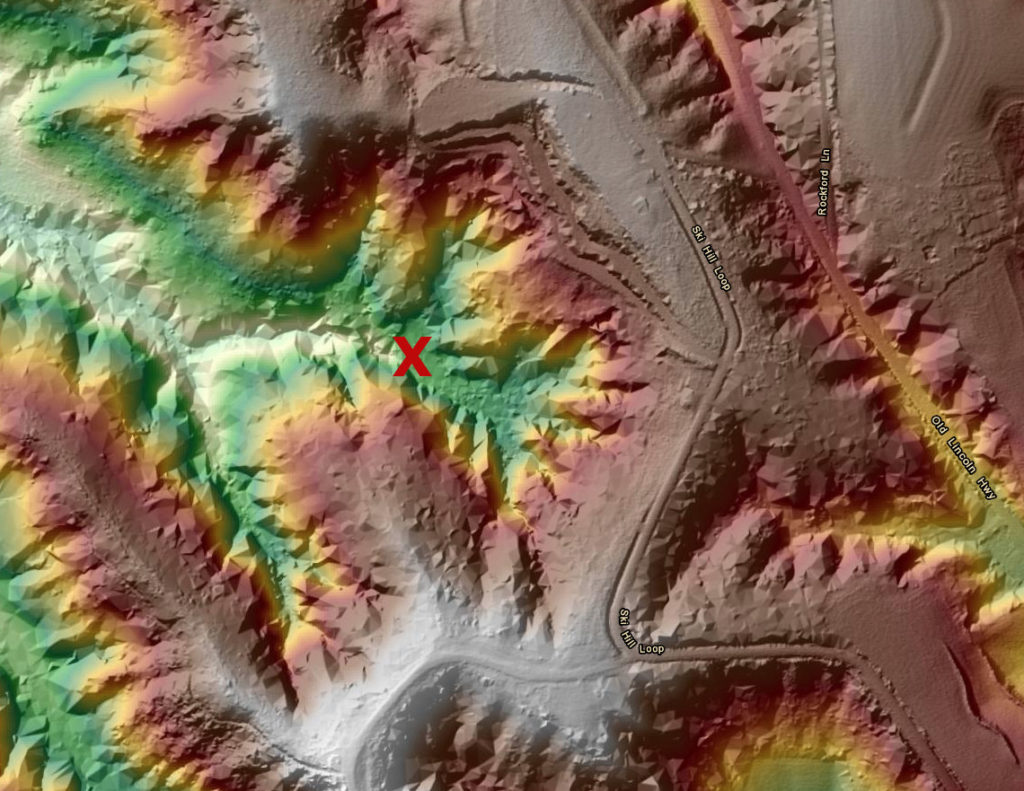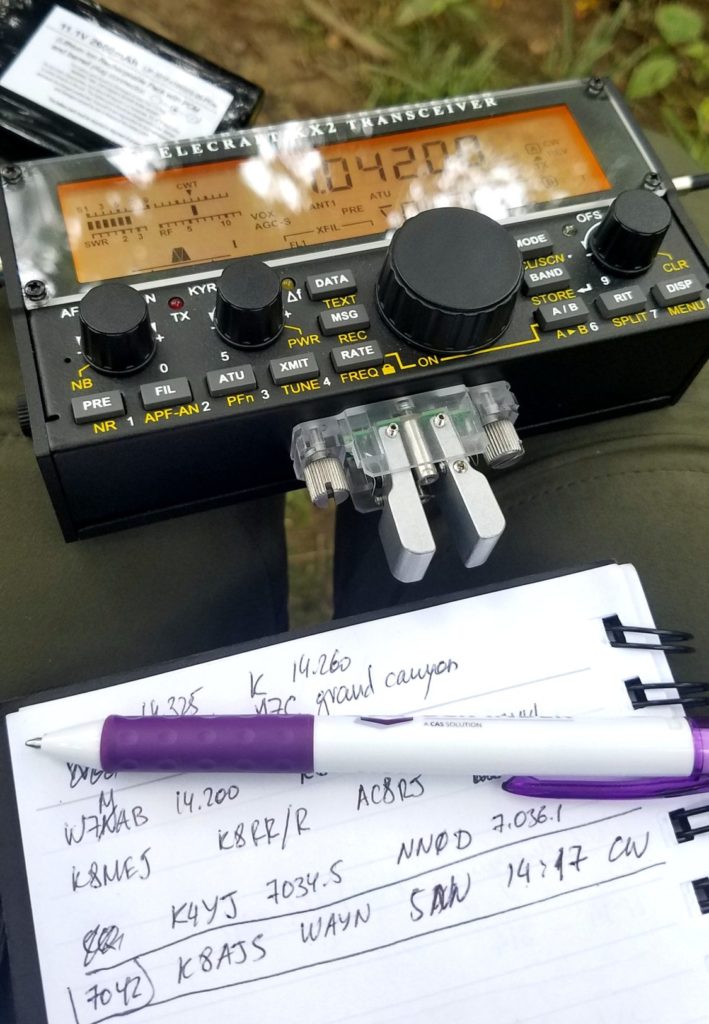Since I got my IC-7100/Commander portable HF setup, I loved the idea of operating in the field from various locations where the travels take me. At some point, I started to think about my options in case when I will not drive, but will rather need to use some means of public transportation, be it a bus or an airplane, and thus won’t be able to take my current portable station with me. Several weeks ago I became a happy owner of an Elecraft KX2 – an ultra-portable HF rig that packs an impressive spectrum of features in a very compact form-factor. Weighing just over a pound (together with a spare battery, CW paddle and a hand mic), it is definitely a rig that can be easily packed in my carry-on.
Since the KX2 has an internal tuner (unlike my Icom IC-7100), I decided to experiment with a different antenna system. I do love the performance of my SuperAntenna, but I decided to see if there is a comparable option that will be even more compact. For this purpose, I chose the PackTenna mini – a “random wire” type of antenna with a 9:1 unun, that should work fine with the KX2’s tuner.
I haven’t had a chance to try how my newest toy works until this weekend, when we decided to go for a short camping outing with one of my colleagues. For such trips, we usually don’t go far, and Hitchcock Nature Center in western Iowa is one of our favorite places. Since these outings are not hiking-heavy, we usually spend some quality time experimenting with bushcraft cooking among others.

As much as I like this place for camping – it is very far from ideal when it comes to setting up a radio station (if we’re not talking about getting on the air from their awesome outlook tower 🙂 ). The tent camping sites are located almost as low in a valley as you can get there, and are thoroughly surrounded by trees and hills from all directions.


However, my goal was not to spend some significant time on the air, but rather just try the new rig and see what is it capable of. Thus, I just used the occasion and gave it a shot. I hoisted the antenna wire in a sloper configuration, with its top end up in a tree using a throw line a weight (gotta admit that I’ve never done that before, so I had to try several times before I was more or less satisfied). The feed point of the antenna was located almost at the ground level next to my tent.

I first turned the radio on SSB. I was very pleasantly surprised by how fast and easy the tuner worked, matching the antenna to 1:1 SWR at all bands in just a few seconds. The audio was very clean, and the reception was also a pleasant surprise given my location: I was able to hear multiple stations, including some from FL and OR, on 20 meters. As several state QSO parties were in progress, I tried to contact a few stations. I did keep my expectations low, and sure enough no miracle happened: with only 10 W of output power and quite some pileups for the stations working the contests, nobody heard me.

I was not too disappointed anyway. Before going QRT and returning back to the campfire, I decided to change the mic to the paddle and try to get a few contacts on CW. After all, this mode is well-proven in its ability to deliver the signal from compromised locations and at low power. I am new to CW, and still make quite some mistakes – but the experiment was successful. Of course, the QSO parties helped a lot as there were quite some stations calling, and the exchange was short and simple, so I wasn’t too scared by the necessity of a long rag-chew while I still try to improve my copy.
In about 15 minutes, I was able to log 3 contacts with stations from different counties in Ohio – and that my victory of the day. I left with a feeling of accomplishment, and definitely look forward to set up this station somewhere on a flat terrain to test its performance in a less compromised setting.